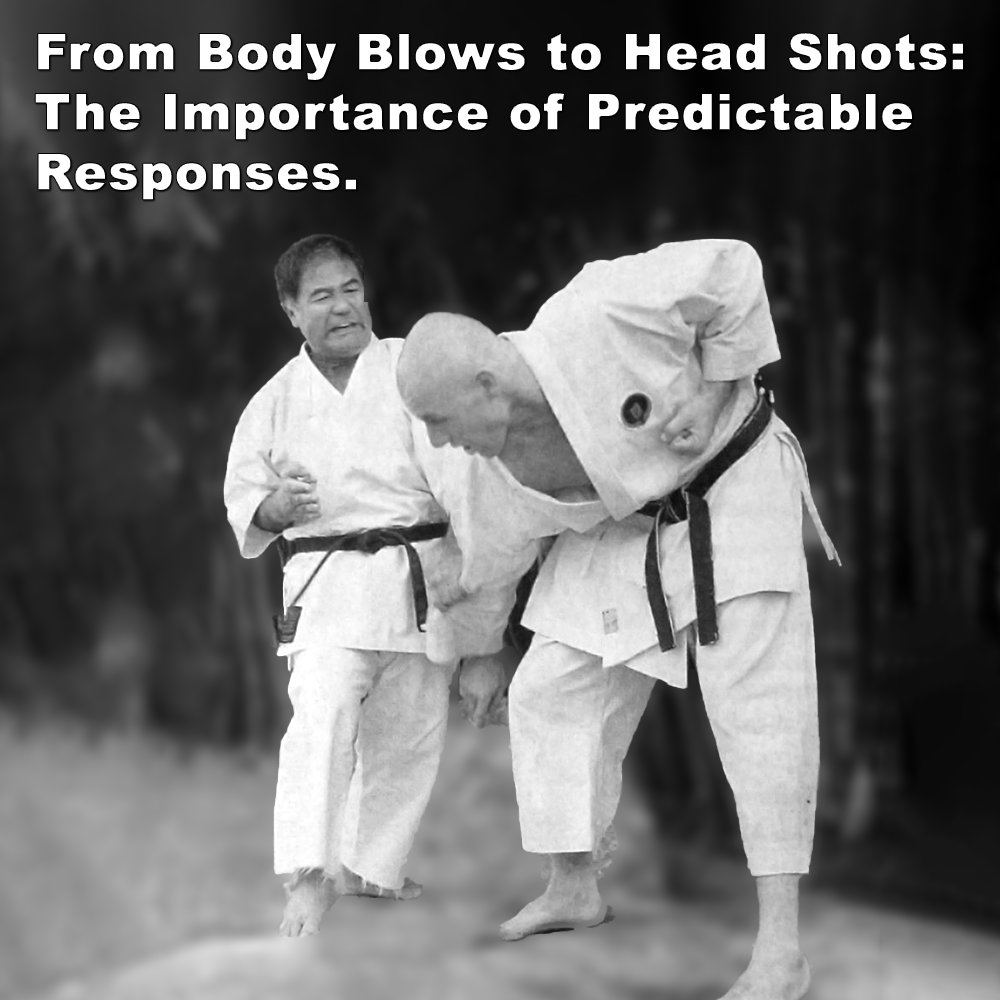
From Body Blows to Head Shots: The Importance of Predictable Responses.
Posted by ADAM CARTER on JUL 02, 2024

From Body Blows to Head Shots: The Importance of Predictable Responses.
(Approx 2 minute read)
Have you ever wondered why so many techniques in kata appear to be aimed at chudan level?
Guess what? Perhaps they’re not!
Typical bunkai often targets the solar plexus. But what if this isn’t the intended target at all? What if the true purpose is to elicit a predictable response from your opponent, making the actual target the head or neck?
Choki Motobu once said, “In a real confrontation, more than anything else one should strike to the face first, as this is the most effective.”
What is a predictable response?
Technically, there are infinite possibilities during a confrontation. However, certain actions significantly increase the likelihood of your opponent reacting in a predictable manner, benefiting the defender.
For example, if I strike someone in the abdomen, a common response might be that their hands drop to protect the area. If the technique is successful, their head, shoulders, and torso will tilt forward, further exposing their head and neck.
Many movements in kata could be designed to cause an opponent’s reaction, using a predictable response. So what looks like a blow to the body is, in fact, a blow to the head or neck.
However, these movements do not entirely rely on predetermined responses, because everyone responds differently to a stimulus. But this should at least be considered in your analysis.
An opponent will never respond in a prearranged manner in a fight. This is one of the flaws with commonly demonstrated bunkai. Such demos are unrealistic because they rely on the opponent’s compliance. Effective and realistic bunkai isn’t done with a partner who goes along with it; it’s done on an opponent who resists and responds to your input.
I’m sure everyone has seen demonstrations where an opponent just stands there waiting for the defender to apply a technique. This is helpful in the beginning to learn, but it’s unrealistic – no one just stands there. So you have to move on from this mindset.
Therefore, you have to consider what would happen when the opponent is struck, moved, bumped, unbalanced, etc.
Where would they be? What position would their limbs, torso, head, and neck be in after you have made contact?
For example, an opponent is very likely to move away from any source of pain. Any follow-up movements should acknowledge this and other similar involuntary actions, taking into account their new position.
Although we can’t rely on the opponent’s compliance, some physical responses are instinctive and therefore predictable. These instinctive motions should be considered when analyzing your kata.
For bunkai to be effective, it must be applicable to real situations, training must be realistic. Therefore, it’s always worth considering your opponent’s predictable responses to realistic attacks in your training.
Quote from: “Motobu Choki Sensei Goroku” (Collection of sayings by Choki Motobu) as partially translated by Joe Swift.
![]() Photo Credit: Morio Higaonna Goju-Ryu from the Dragon Times
Photo Credit: Morio Higaonna Goju-Ryu from the Dragon Times
